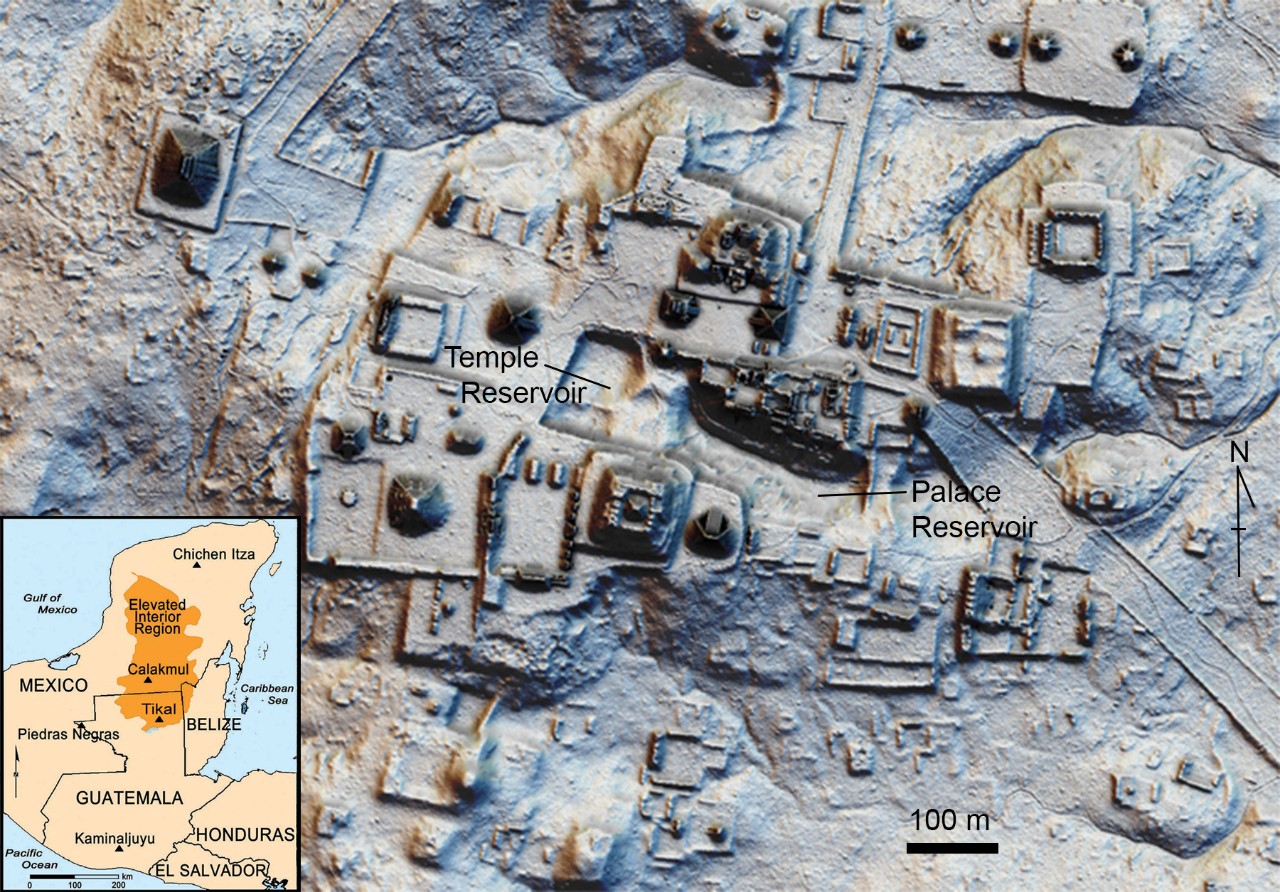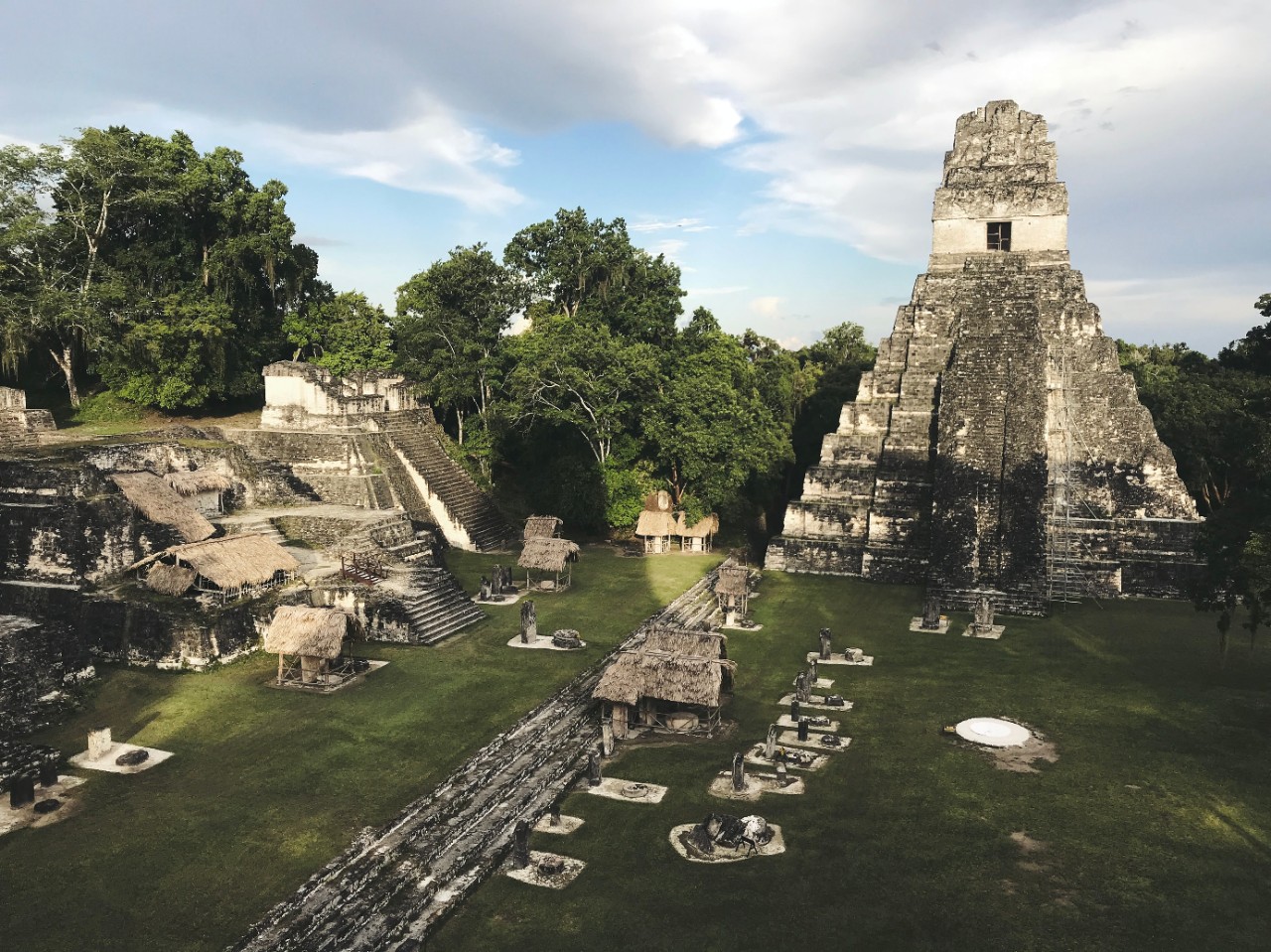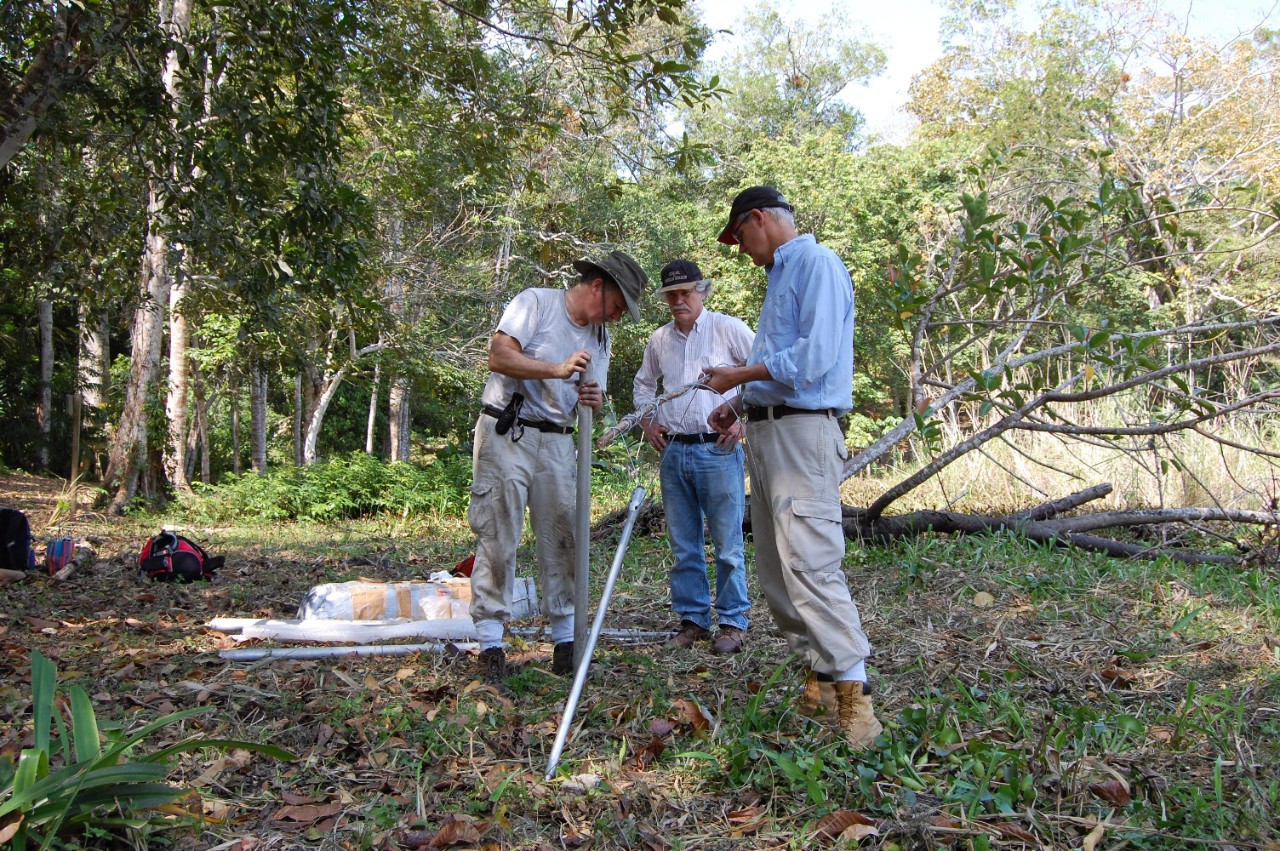The ancient Maya city of Tikal was a bustling metropolis and home to tens of thousands of people.
The city comprised roads, paved plazas, towering pyramids, temples and palaces and thousands of homes for its residents, all supported by agriculture.
Now researchers at the University of Cincinnati say Tikal's reservoirs - critical sources of city drinking water - were lined with trees and wild vegetation that would have provided scenic natural beauty in the heart of the busy city.
UC researchers developed a novel system to analyze ancient plant DNA in the sediment of Tikal's temple and palace reservoirs to identify more than 30 species of trees, grasses, vines and flowering plants that lived along its banks more than 1,000 years ago. Their findings painted a picture of a lush, wild oasis.
"Almost all of the city center was paved. That would get pretty hot during the dry season," said paleoethnobotanist David Lentz, a professor of biology in UC's College of Arts and Sciences and lead author of the study.
"So it would make sense that they would have places that were nice and cool right along the reservoir," he said. "It must have been beautiful to look at with the water and trees and a welcome place for the kings and their families to go."
The study was published in the Nature journal Scientific Reports.

An aerial view using light detection and ranging or LIDAR shows the ancient layout of the city center at Tikal. Graphic/Scientific Reports
Lentz and his research team offered four hypotheses about what, if any, plants might have grown along the all-important reservoirs: Did the Maya grow crops such as maize or squash there? Or did they plant fruit trees like those found at a similar reservoir at Mexico's Purron Dam?
Maybe they lined the reservoirs with cattails in keeping with their nickname people of the reeds? Lentz noted that water lilies often adorn ancient Maya paintings.
"Throughout Maya iconography, water lilies represent continuity between the water world and the above world," Lentz said. "It was part of their mythology."
But researchers found little evidence to support any of these hypotheses. Instead, they found evidence bolstering a fourth idea: that the Maya allowed the embankments to remain undisturbed forest. This would have helped to prevent erosion and provided medicinal or edible plants and fruits.
Researchers found evidence of a variety of plants living along the aquifers, including trees like cabbage bark and ramón that tower 100 feet high. Lentz said ramón is a dominant rainforest species in Guatemala.
"Why you would find ramón around the reservoir is a curiosity. The answer is they left this forest intact," Lentz said. "Tikal has a harsh climate. It's pretty tough to survive when you don't get rain for five months of the year. This reservoir would have been the font of their lives. So they sometimes would protect these places by not cutting down the trees and preserving a sacred grove."
Among dozens of plants native to the region, they found evidence of wild onion, fig, wild cherry and two types of grasses. Lentz said grass seeds might have been introduced to the reservoir by visiting waterfowl. Grass would have proliferated at the edges of the reservoirs during dry seasons and droughts.
"Tikal had a series of devastating droughts. As the water levels dropped, they saw blue green algae blooms, which produces toxic substances," Lentz said. "The droughts were great for the grass but not so much for the forest plants that lived along the reservoir's banks."

The ancient Maya city of Tikal in Guatemala. Photo/Jimmy Baum/Wikimedia Commons
Were these wild areas the equivalent of a park?
"I think they were. I don't know how public they would have been," Lentz said. "This was a sacred area of the city surrounded by temples and palaces. I don't know if the commoners would have been that welcome."
Tikal was a flourishing seat of power, religion and trade for Mesoamerica in what is now northern Guatemala, reaching its peak of influence more than 1,200 years ago. Today, the cultural and archaeological site is a scenic national park surrounded by primary rainforest.
But more than 1,000 years ago, the area would have looked dramatically different. Instead of rainforest, the city center would have been surrounded by homes and farm plots of corn, beans and squash needed to support 60,000 people or more. At its peak, Tikal was bigger in population than Wilkes-Barre, Pennsylvania; Atlantic City, New Jersey; or Pensacola, Florida.
Microbiologists Alison Weiss, a professor in UC's College of Medicine, and Trinity Hamilton, now with the University of Minnesota, took up the task of analyzing ancient microbial DNA from the reservoir's sediment samples.
Weiss studies pathogenic E. coli and human microbiomes in her lab. Her latest work examined how chemotherapy in cancer patients impairs the protective lining of their digestive systems. But she likes all science, she said, and was eager to accept a new challenge.
"The DNA is ancient so it tends to be degraded with short little sequences," Weiss said.
With the help of the Florida company Rapid Genomics, UC's scientists developed a novel probe to select plant DNA in the sediment samples. And they were able to amplify small strands of DNA from chloroplasts, the plant structures where photosynthesis takes place. Then researchers could match the ancient Tikal samples with the DNA of known plant species in much the same way scientists amplify ribosomal DNA to identify species of bacteria.
"The analysis was quite challenging because we were the first to do this," Weiss said. "Bacterial ribosomal DNA has a database. There was no database for this. We had to take sequences one by one and search the general database to find the best match."
"This project was a bit of a shot in the dark," Tepe said. "We half-expected to get no results at all. The fact that we were able to get an idea of the vegetation surrounding the reservoirs at Tikal is, in my opinion, a spectacular success and a proof of concept that we hope to apply to other Mayan sites."
UC researchers can now study the ancient world in a promising new way.
"We're delighted we had success," Weiss said. "It took a long time to figure out how to do it and make sure it wasn't junk data in, junk data out. Now to be able to learn more about ancient people from these sediment studies is very exciting."
Featured image at top: UC College of Arts and Sciences biology professor David Lentz stands in front of a pyramid at Tikal in Guatemala. Photo/Provided

UC College of Arts and Sciences researchers Nicholas Dunning, Vernon Scarborough and David Lentz have collaborated on multiple investigations of ancient cultures. Photo/Liwy Grazioso Sierra






